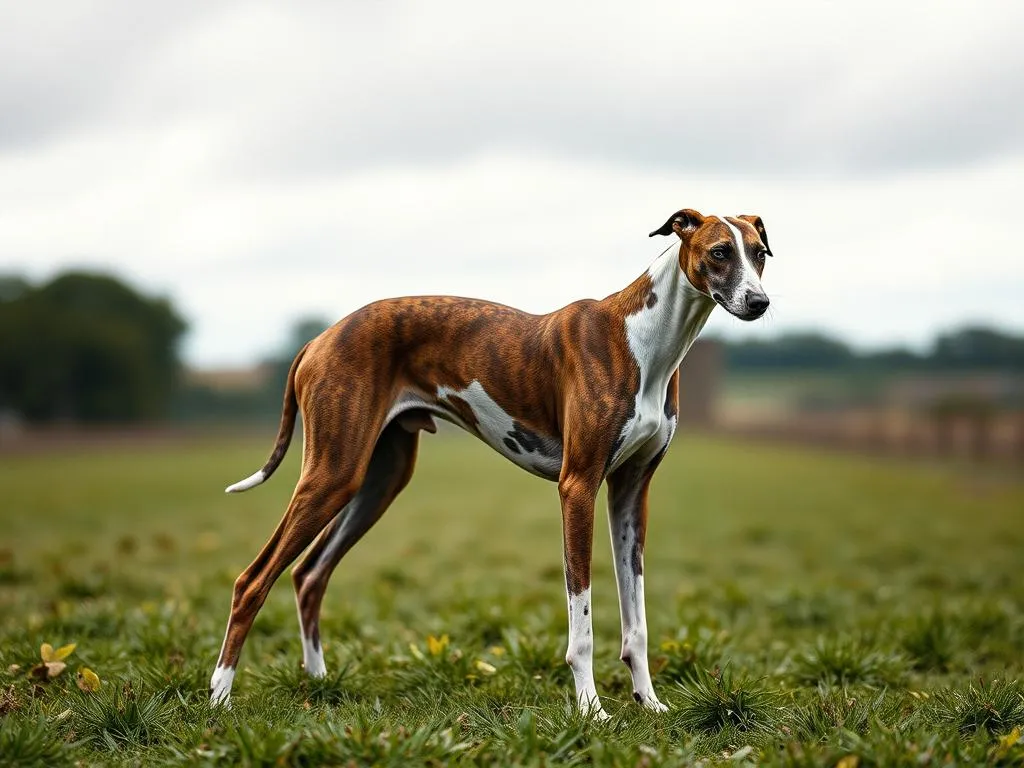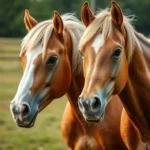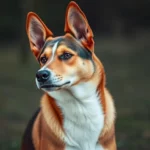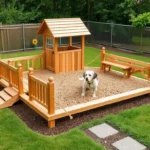
Greyhounds are one of the oldest dog breeds in the world, known for their striking appearance and remarkable speed. Understanding what Greyhounds were bred for is vital not only to appreciate their history but also to comprehend their unique traits and characteristics that make them special companions today. This article delves into the fascinating history of Greyhounds, their primary uses through the ages, their physical attributes, and the modern-day realities of owning a Greyhound.
History of Greyhounds
Origins of the Breed
The origins of Greyhounds can be traced back thousands of years. Archaeological findings suggest that they were present in ancient civilizations such as Egypt, Greece, and Rome. In these societies, Greyhounds were revered and often depicted in art and literature, showcasing their noble status. The breed’s name is believed to have been derived from the Old French word “grei,” meaning “to leap,” which is a nod to their agility and speed.
Greyhounds were primarily bred in regions with vast expanses of land where they could hunt effectively. The unique landscape of the Mediterranean allowed these dogs to chase game over long distances, making them invaluable to hunters. Their sleek bodies and keen eyesight were perfect for spotting and pursuing prey.
Evolution of Purpose
Over the centuries, the purpose of Greyhounds evolved significantly. Initially bred for hunting, they transitioned into racing and companionship. As hunting practices changed and became less common, Greyhounds found a new role in the world of competitive racing. This shift was heavily influenced by cultural factors, including the rise of dog racing as a popular sport in the 20th century.
Today, Greyhounds are not just seen as racing dogs; many have become beloved family pets. Their gentle nature and adaptability make them excellent companions, further demonstrating the evolving relationship between humans and this majestic breed.
Primary Uses of Greyhounds
Hunting and Game Pursuit
Historically, Greyhounds were bred for hunting, specifically for their ability to chase down game animals. Their primary targets included fast-running creatures such as deer and hares. The breed’s keen eyesight and remarkable speed allowed them to pursue prey with unmatched efficiency.
Greyhounds have been known to reach speeds of up to 45 miles per hour, making them one of the fastest dog breeds. This exceptional speed, combined with their stamina, made them the ideal choice for hunters looking to capture elusive game. Their hunting heritage is still evident in their physical build and instincts, which many owners observe even in their pet Greyhounds.
Racing and Competitive Sports
As hunting became less prevalent, Greyhounds found a new purpose in the world of racing. The first official Greyhound race took place in the early 20th century, and it quickly gained popularity. Racing tracks sprang up across the United States and other countries, further solidifying the Greyhound’s status as a competitive athlete.
The development of Greyhound racing not only influenced the breed’s popularity but also had a significant impact on their breeding practices. Breeders began focusing on traits that enhanced speed and agility, leading to the sleek, athletic Greyhounds we see today. However, the rise of racing also brought challenges, such as the need for responsible breeding and care for retired racers, which continues to be a topic of discussion among advocates today.
Companion Animals
In recent years, there has been a significant shift towards recognizing Greyhounds as wonderful companion animals. Many retired racing Greyhounds are adopted into loving homes, where they thrive as family pets. Their gentle demeanor, affectionate nature, and low exercise needs make them suitable for various living situations, including apartments and homes with yards.
Greyhounds are known for their calm temperament, often described as couch potatoes. Despite their athletic past, they enjoy lounging around and require less exercise than one might expect. This makes them ideal companions for those who may not have the time or energy for high-energy breeds. Their adaptable nature allows them to fit seamlessly into many lifestyles, making them popular choices for families, singles, and seniors alike.
Physical Attributes and Traits
Distinctive Features
The physical attributes of Greyhounds are striking and unique. They are tall, slender dogs with long legs and a streamlined body, designed for speed. Adult Greyhounds typically weigh between 60 to 70 pounds, with males being slightly larger than females. Their short, smooth coat comes in various colors, including fawn, brindle, black, and white, adding to their visual appeal.
One of the most distinctive features of Greyhounds is their long, narrow head and deep chest, which contribute to their aerodynamics. Their large, expressive eyes give them a gentle and intelligent appearance. These physical characteristics are not just for show; they are the result of centuries of selective breeding aimed at enhancing their hunting and racing abilities.
Speed and Agility
The speed and agility of Greyhounds are legendary. Bred primarily for their athleticism, they can cover ground quickly and effortlessly. This incredible speed is attributed to their unique muscular structure, which allows them to accelerate rapidly and maintain high speeds over distances.
Their ability to sprint makes them exceptional in racing environments, but it also means that they require careful management in their daily lives. While they are capable of running at high speeds, Greyhounds are not high-energy dogs. They enjoy short bursts of activity followed by long periods of rest, and owners must find a balance that meets their physical and emotional needs.
Temperament and Behavior
Greyhounds are known for their friendly and affectionate temperament. Despite their racing background, they are typically gentle and calm, making them great companions for families and individuals. Their behavior often reflects their history as hunting dogs, leading to a nurturing disposition towards their human families.
Socialization is crucial for Greyhounds, particularly those that have transitioned from the racing world. They may initially be shy or reserved but can quickly adapt to new environments with proper introductions and gradual exposure to different situations. Their intelligence and eagerness to please make them relatively easy to train, though patience and positive reinforcement are essential.
Modern-Day Greyhounds
Adoption and Rescue
The trend of adopting retired racing Greyhounds has grown significantly in recent years. Many racing organizations and rescue groups work tirelessly to find loving homes for these dogs once their racing careers come to an end. The importance of Greyhound rescue organizations cannot be overstated, as they provide vital support in rehabilitating and rehoming these dogs.
Adopting a retired racing Greyhound can be a rewarding experience. These dogs often come with a gentle nature and a strong desire to bond with their new families. However, potential owners should be aware that transitioning from a racing environment to a home setting can take time and patience.
Lifestyle Needs
Caring for a Greyhound requires an understanding of their unique needs. While they may be known for their speed, they do not require excessive exercise. Short walks and playtime are usually sufficient to keep them healthy and happy. However, socialization and mental stimulation are equally important, as these dogs thrive on interaction and engagement.
Their living conditions should be comfortable and safe, free from hazards that could pose risks to their health. Greyhounds do well in homes with secure yards, but they can also adapt to apartment living, provided they receive regular walks and opportunities to explore.
Feeding a Greyhound appropriately is crucial, as their dietary needs can vary based on their age and activity level. Owners should consult with veterinarians to ensure they are providing balanced nutrition tailored to their specific needs.
Misconceptions About Greyhounds
Common Myths
Despite their popularity, many myths surround Greyhounds that can lead to misunderstandings about their care and temperament. One common myth is that Greyhounds require extensive exercise due to their racing background. In reality, while they enjoy daily walks and playtime, they are quite content to lounge around the house, making them low-maintenance companions.
Another misconception is that Greyhounds are aggressive due to their history in racing. However, most Greyhounds are gentle and friendly, often forming strong bonds with their families. Understanding these myths helps potential owners make informed decisions about adopting and caring for a Greyhound.
The Reality of Greyhound Care
Caring for a retired racing Greyhound comes with unique considerations. These dogs may have experienced a different lifestyle than typical pets, leading to potential challenges such as anxiety or fear of new environments. Educating oneself about their behaviors and needs is essential for a smooth transition into home life.
Retired Greyhounds may require additional support, including training and patience as they adjust to their new surroundings. Owners should be prepared to provide a safe, loving environment that fosters their emotional well-being. With the right care and attention, these dogs can thrive in their new homes, proving to be loyal and loving companions.
Conclusion
The historical significance of Greyhounds and their evolution from hunting dogs to racing athletes and beloved companions is a testament to their adaptability and charm. Understanding what Greyhounds were bred for helps potential owners appreciate the breed’s unique traits and care requirements.
Owning a Greyhound can be a fulfilling experience, offering companionship and joy to families and individuals alike. Their gentle nature and distinctive characteristics make them a wonderful addition to any home. As the awareness of their needs continues to grow, so does the opportunity for more Greyhounds to find loving forever homes.









